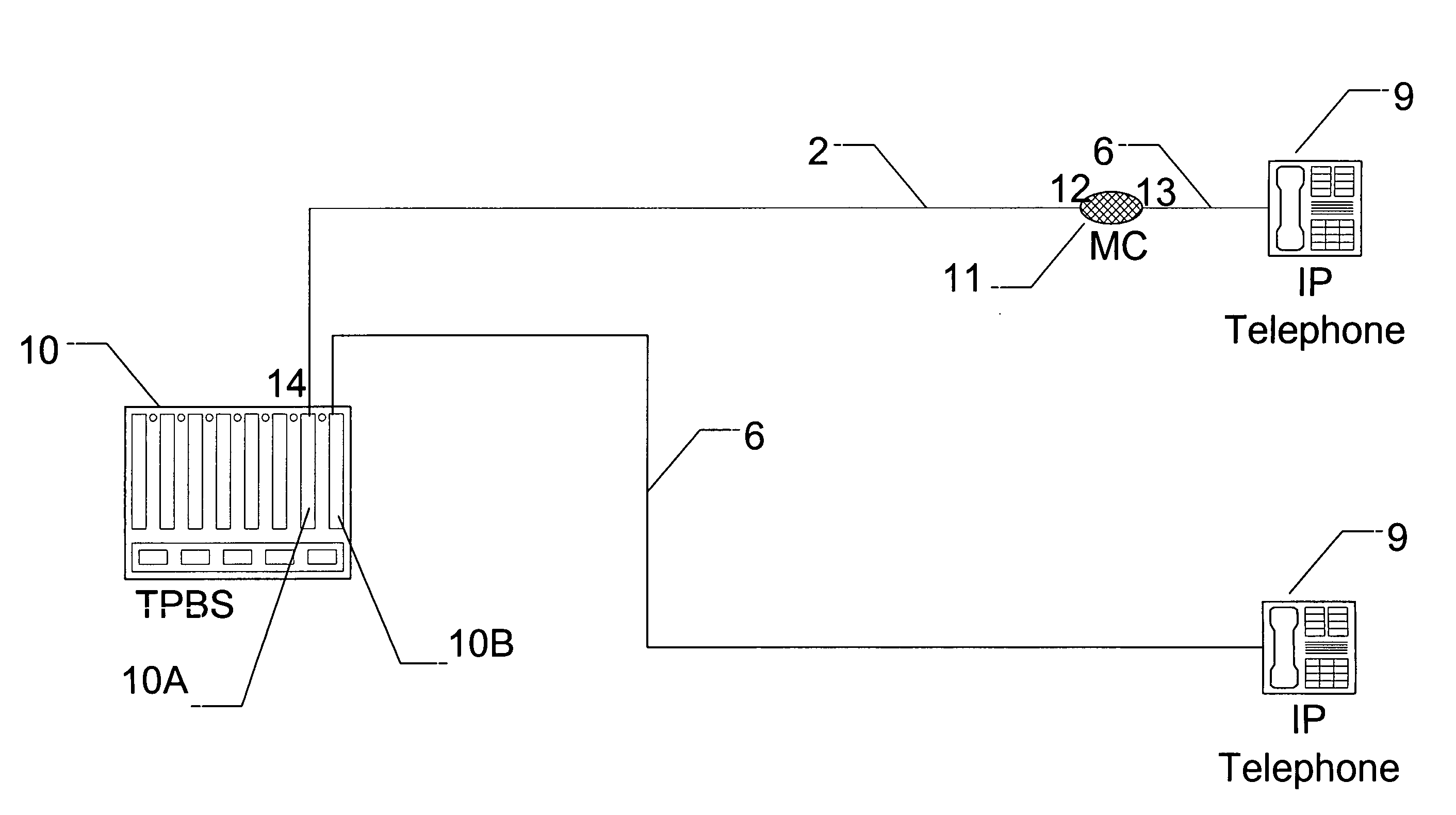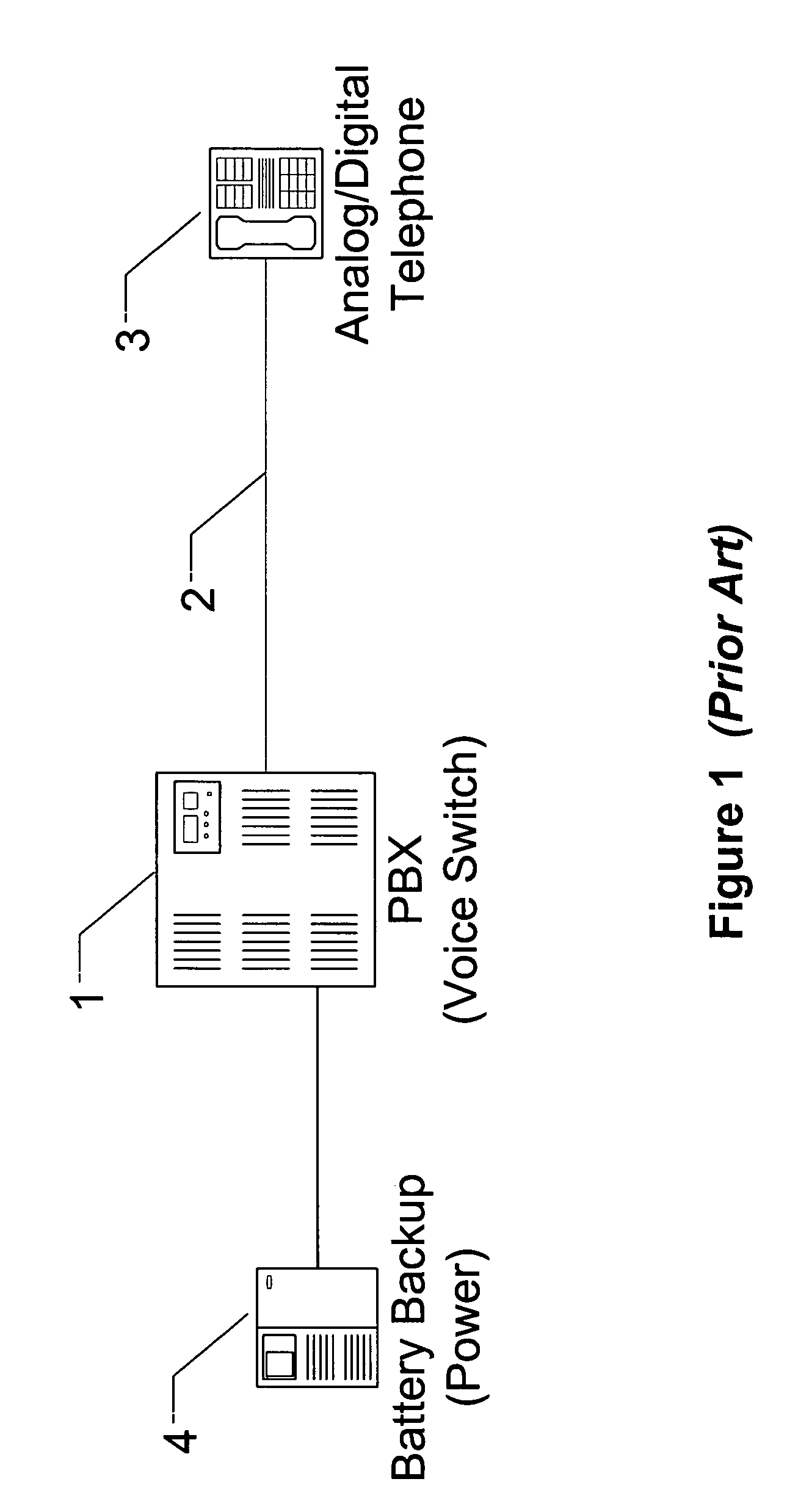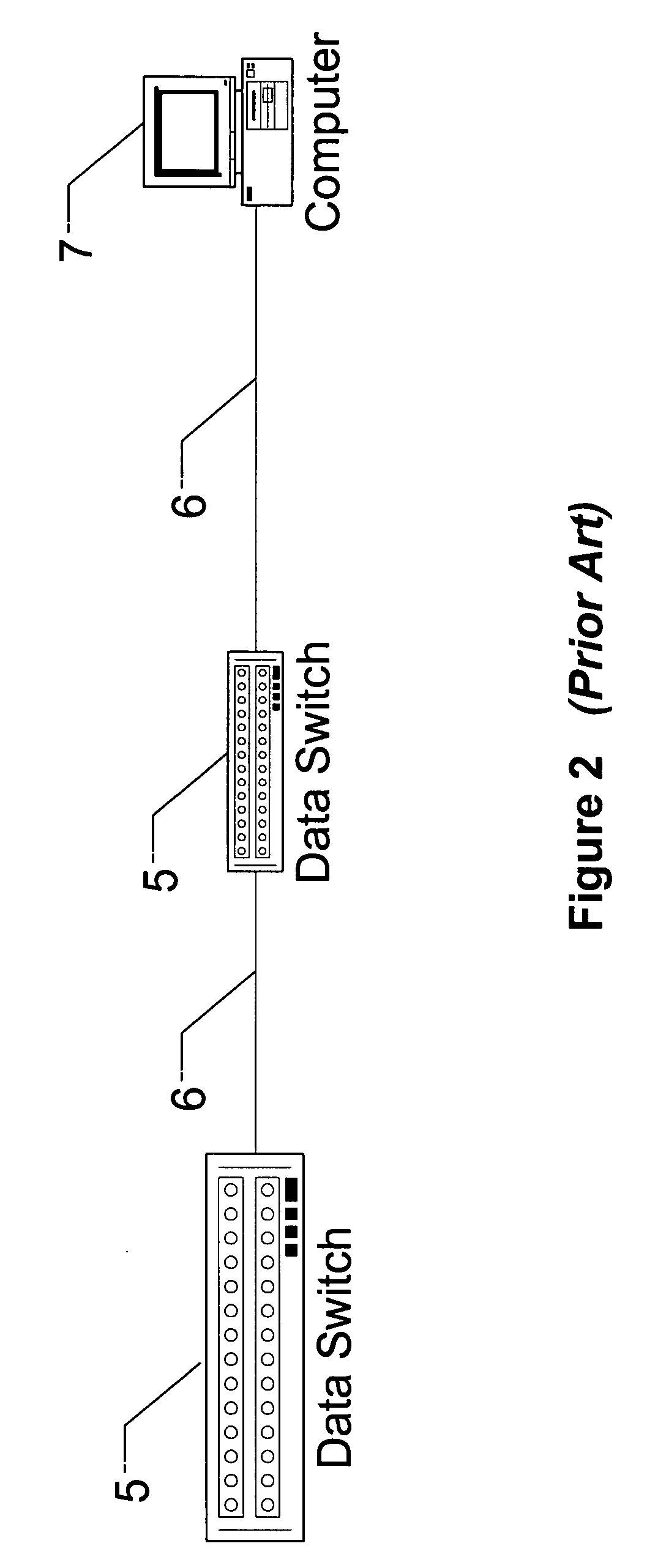IP telephony transport
a technology of telephony and ip, applied in the field of ip telephony transport, can solve the problems of data traffic sources burst, voice and data convergence on the same network and technology can be expensive, and the voice and data convergence can be difficult to achiev
- Summary
- Abstract
- Description
- Claims
- Application Information
AI Technical Summary
Benefits of technology
Problems solved by technology
Method used
Image
Examples
Embodiment Construction
[0028]Conventional telephony is still widely used as it has been in deployment for several decades. FIG. 1 shows the conventional telephony system, solely a voice network, which uses the twisted pair infrastructure usually made out of a conducting material such as copper, hereinafter referred to as twisted pair infrastructure. In this system, each Analog or Digital telephone 3 has a dedicated pair of wires 2, which terminate on a line card of the PBX 1, a telephone voice switch. Voice networks within an enterprise typically run over lower grade cable, such as Categories 1-3 (CAT1-3) cabling and other equivalents. The PBX houses the call control and switching functions. Most PBX switches have battery backup 4 to ensure operation during power outages. The battery backup 4 also provides power to the analog or digital telephones 3 through the PBX 1, over the copper wiring 2. This ensures that the phone system is available during times of crises, even when the building electrical power i...
PUM
 Login to View More
Login to View More Abstract
Description
Claims
Application Information
 Login to View More
Login to View More - R&D
- Intellectual Property
- Life Sciences
- Materials
- Tech Scout
- Unparalleled Data Quality
- Higher Quality Content
- 60% Fewer Hallucinations
Browse by: Latest US Patents, China's latest patents, Technical Efficacy Thesaurus, Application Domain, Technology Topic, Popular Technical Reports.
© 2025 PatSnap. All rights reserved.Legal|Privacy policy|Modern Slavery Act Transparency Statement|Sitemap|About US| Contact US: help@patsnap.com



